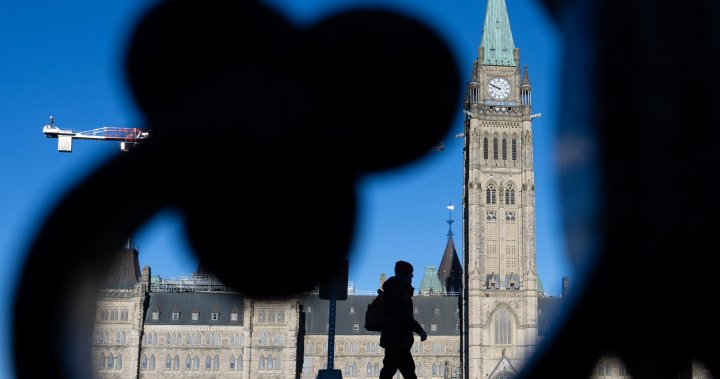Paragraph 1: Political Turmoil and Fiscal Update Release:
The Canadian political landscape experienced significant upheaval as Chrystia Freeland, then-Minister of Finance, abruptly resigned from her position, issuing a scathing letter citing irreconcilable differences with Prime Minister Justin Trudeau regarding the direction of federal finances. This resignation occurred just prior to the release of the fall economic statement, a crucial document outlining the government’s economic outlook and fiscal plans. Amidst this political turbulence, Karina Gould, Leader of the Government in the House of Commons, stepped in to present the statement, while Dominic LeBlanc was swiftly sworn in as the new Minister of Finance and Intergovernmental Affairs. Freeland’s departure cast a long shadow over the fiscal update, raising questions about internal government disagreements and the stability of the Liberal government, already facing declining approval ratings.
Paragraph 2: Deteriorating Fiscal Outlook and Controversial Spending:
The fall economic statement painted a picture of economic uncertainty and a worsening fiscal position for the Trudeau government. The projected deficit for the 2023-24 fiscal year soared to $61.9 billion, significantly exceeding the previously established cap of $40.1 billion. This breach of a key fiscal anchor raised concerns about the government’s fiscal discipline and its ability to manage public finances. The government attributed the ballooning deficit to one-time costs associated with phasing out COVID-19 support programs and a substantial allocation for Indigenous contingent liabilities, primarily related to land claims and settlements. However, even after accounting for these extraordinary expenses, the adjusted deficit still exceeded initial projections. Critics, such as Randall Bartlett of Desjardins, expressed concern over the government’s escalating spending and its potential impact on the country’s debt-to-GDP ratio.
Paragraph 3: Economic Uncertainty and Looming US Protectionism:
The fiscal update acknowledged the significant economic uncertainties facing Canada, particularly the potential impact of US protectionist policies under the re-elected President Donald Trump. While the specific details of these policies remained unclear at the time of the update’s release, the government acknowledged the potential for substantial negative consequences for the Canadian economy. The update explored various economic scenarios, with the downside scenario predicting a $42 billion annual hit to the Canadian economy compared to the baseline forecast, driven by decreased consumer and business confidence and reduced investment. This looming threat from the south underscores the vulnerability of the Canadian economy to external shocks and the need for proactive measures to mitigate potential damage.
Paragraph 4: Domestic Economic Strategies and Border Security:
In response to the uncertain economic landscape and the threat of US protectionism, the Liberal government outlined several domestic economic strategies in the fiscal update. These strategies focused on fostering internal growth and strengthening the Canadian economy’s resilience. Key proposals included a $15 billion fund to finance AI data center development, aiming to attract investment from Canadian pension funds and stimulate technological innovation. The government also signaled its intention to modify regulations to encourage greater investment from Canadian pensions in domestic entities and public utilities. Recognizing the strategic importance of border security, the government also committed $1.3 billion over six years to enhance border security measures, partly in response to concerns raised by the incoming US administration.
Paragraph 5: Political Fallout and Opposition Criticism:
The fall economic statement and Freeland’s resignation triggered significant political fallout and strong criticism from opposition parties. Conservative Leader Pierre Poilievre condemned the Liberals for abandoning their fiscal commitments and accused Trudeau of driving the country into a "pile of debt." Meanwhile, NDP Leader Jagmeet Singh called for Trudeau’s resignation, arguing that the Liberal government was preoccupied with internal conflicts and failing to address the economic concerns of Canadians. The combined effect of the fiscal update’s grim projections and the internal government turmoil further eroded public trust in the Liberal government and intensified political divisions.
Paragraph 6: Additional Measures and Affordability Concerns:
The fiscal update also included a range of other measures, including a temporary reinstatement of changes to the capital cost allowance, designed to encourage business investment in response to potential US tax cuts. The government pledged to address interprovincial trade barriers and explore ways to improve service delivery through AI. However, apart from the previously announced GST/HST holiday on certain grocery items and changes to insured mortgages, the update offered limited new affordability measures, a key concern for many Canadians grappling with rising living costs. One proposal involved exploring the feasibility of expanding access to long-term mortgage options, similar to those available in the United States. Overall, the fall economic statement presented a complex and challenging economic outlook for Canada, marked by internal political discord, external threats, and a growing fiscal burden.

